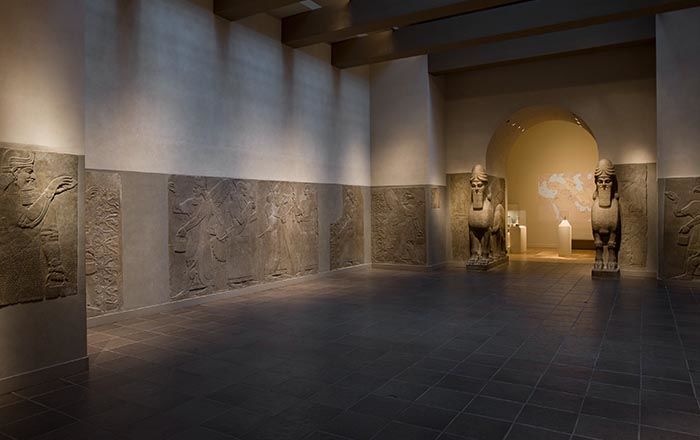Reproduction of a plate with hunting scene
Not on view
Electrotyping is a chemical process used historically to make high quality reproductions of works of art. During the Victorian era, one of the main producers was Elkington & Co. of Birmingham. They were licensed by the South Kensington Museum of London (now the Victoria & Albert Museum) to produce replicas of objects from royal treasuries and museums across Europe. The electrotypes approved by the Department of Science and Art, a British governmental agency, carry Messrs. Elkington’s mark in the form of an official stamp in metal.
This modern electrotype is copy of a silver plate in the Hermitage Museum, St Petersburg. The original, found before 1835, is known as the Pur-i Vahman plate because of its Middle Persian inscription, not visible on the electrotype. Considered post-Sasanian, its imagery derives from the large series of hunting scenes produced by the Sasanians (see Sasanian royal plates, 34.33 and 57.51.19). Here, a horse-archer is hunting a lion and a boar.
In the nineteenth century, many museums collected copies of ancient and historical works of art with the aim of presenting outstanding works to a broader public and to serve as inspiration for artists and manufacturers. The Metropolitan Museum of Art, founded in 1870, began to acquire electrotypes in its first decade. In 1883, Henry Marquand, a collector and early patron of the Museum, funded a large purchase from Elkington & Co. of nearly three hundred pieces. Today, these works are part of many departments in the Museum and along with plaster casts reflect the history of collecting and the role of the museum as a locus for the teaching of art history.
This image cannot be enlarged, viewed at full screen, or downloaded.

